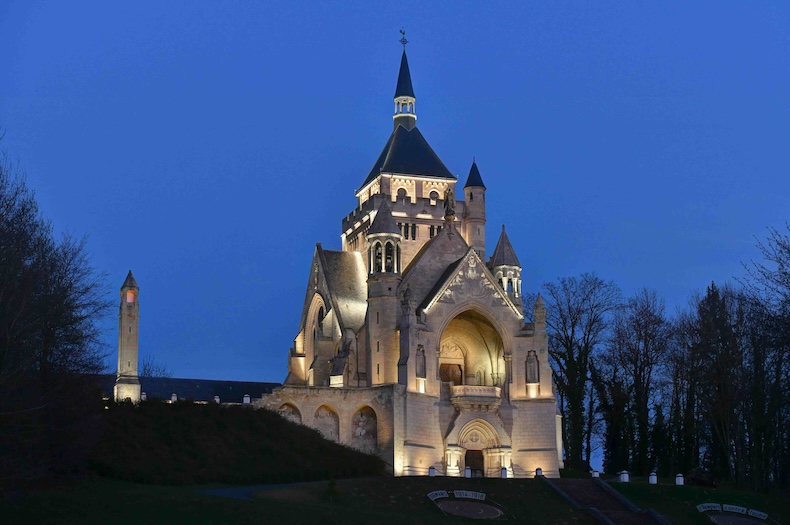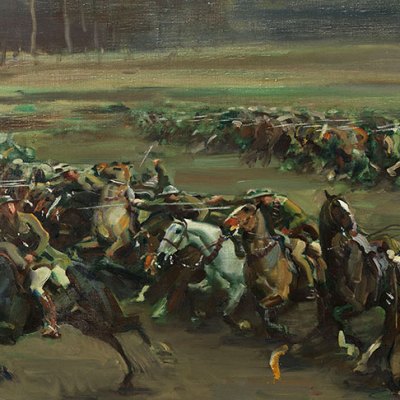That Marne contains the largest number of military graves of any department in France comes as no surprise: it was the site of the first great battle of the First World War, with a second fought there in July 1918. The memorials in this part of north-eastern France range from the quiet minimalism of La Ferté-sous-Jouarre, which remembers members of the British Expeditionary Forces who were killed in the earliest months of the war and have no known graves, to the grandeur of Dormans, built over a ten-year period in memory of the hundreds of thousands who died in both Battles of the Marne.
The cultural historian Jay Winter has written that, for the most part, the war memorials that sprang up all over Europe in the decade after the end of the First World War, while not pacifist, displayed a ‘relative freedom from expressions of anger and triumph’. This certainly seems true of the examples in Marne, but in recent years – as the events these structures commemorate have receded into the past – your roving correspondent has noticed some curious developments on the cultural front, which are harder to classify.
Night view of the Dormans Memorial, a memorial for the two Battles of the Marne in September 1914 and July 1918. Photo: Jolyot/Andia/Universal Images Group via Getty Images

A passing of historical events from living memory usually means that a museum will step forward to fill in the gaps, and the First World War is no exception. In 2011, the Museum of the Great War opened in the town of Meaux, in the department of Seine-et-Marne. It was founded with an educational purpose and aimed squarely at children. In September this year, it hosted a ‘historical re-enactment weekend’ to mark the 110th anniversary of the First Battle of the Marne. On Armistice Day, it takes the interactive element further by unveiling a new attraction: an 800-square-metre ‘open-air educational trench’ where visitors can pretend to be new recruits and descend, via staircase (or elevator, depending on access needs) into an area complete with telescopes, barbed wire, shells and a first-aid post, all to the accompaniment of an ‘immersive soundtrack’.
The museum in Meaux is very clear that it caters for everyone from age four and up, and Rakewell is very clear that they are not the target audience. However, one crucial experiential element seems to be missing from the educational trench. Where are the rats? (Or the mud, for that matter?) When it comes to memory, what Rakewell can recall unprompted of poetry from the First World War is heavily rat-focused. From ‘foul dug-outs, gnawed by rats’ (Siegfried Sasson, ‘The Dreamers’) to ‘Do you remember the rats?’ (Sassoon again, ‘The Aftermath’), to the ‘queer, sardonic rat’ that keeps Isaac Rosenberg company (‘Break of Day in the Trenches’), rodents are seemingly everywhere, where humanity is nowhere to be found.
Meanwhile in Meaux, we are reminded that ‘entry to the trench is included in the museum ticket’.




